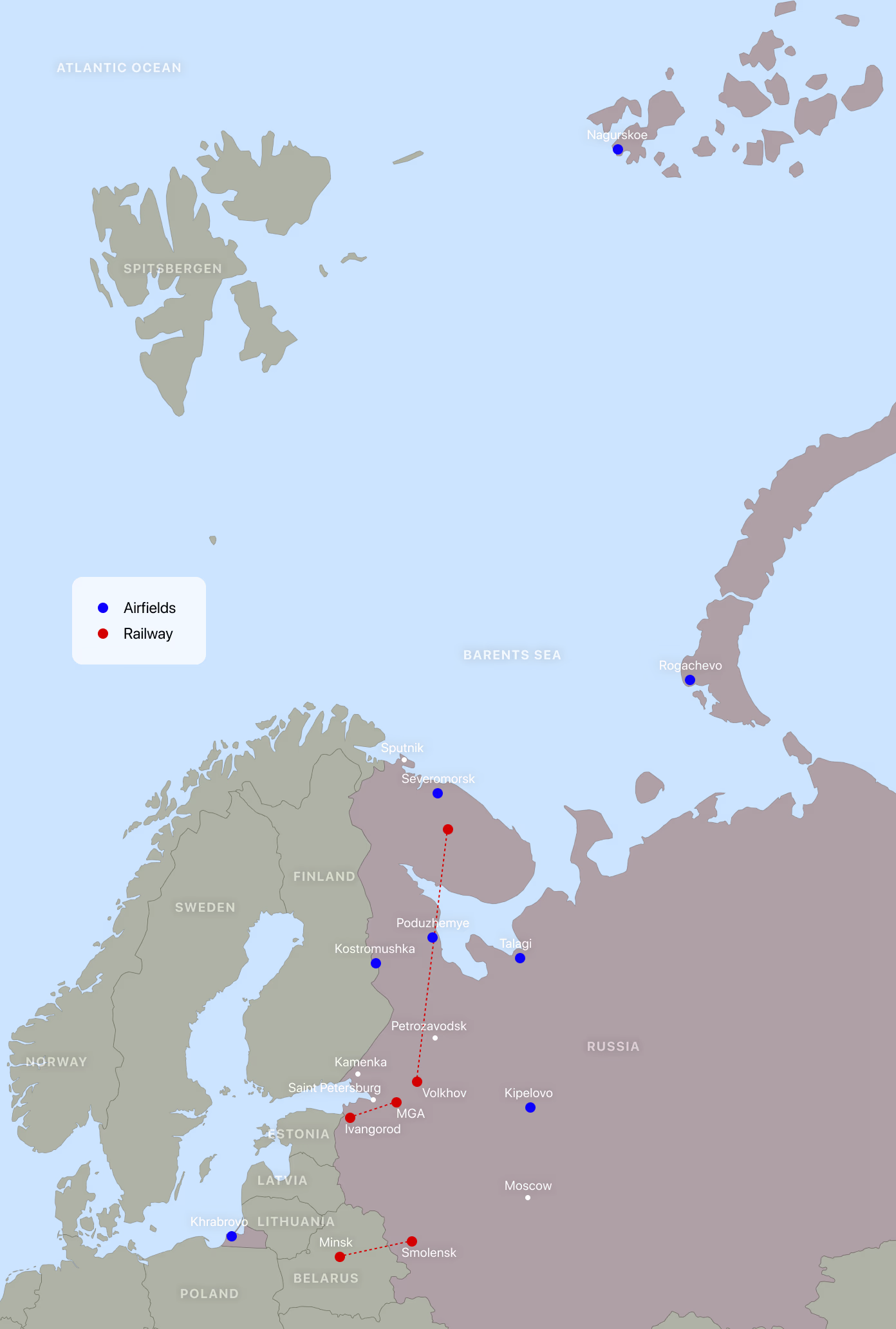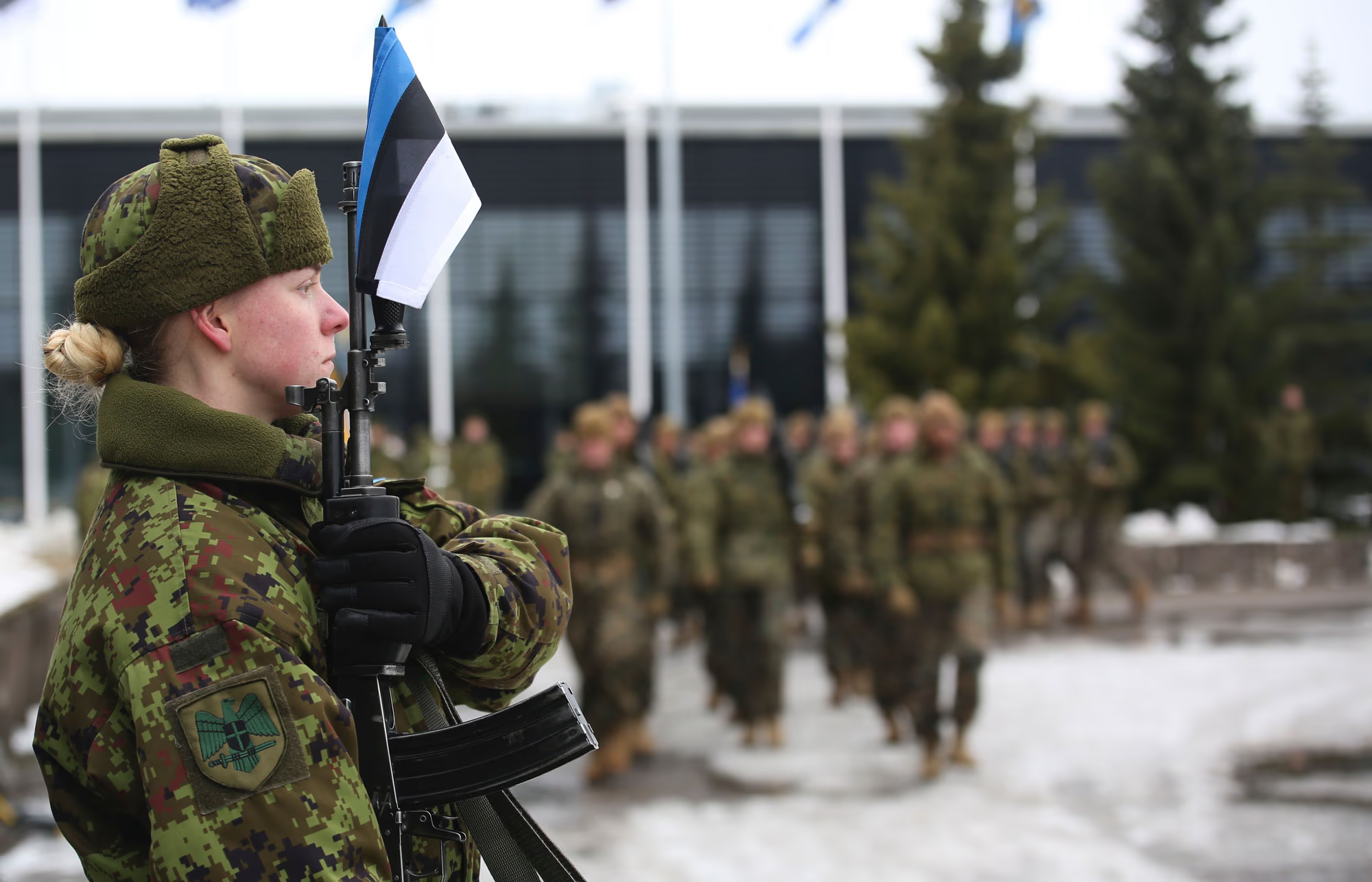Moscow’s plans to significantly expand military infrastructure along its northwestern frontier—from Karelia to Murmansk—point to a strategic shift following the prolonged war in Ukraine. As noted by The Wall Street Journal, Russia is reinforcing troop formations near the borders with Finland, Estonia, and Norway, laying the groundwork for a potential confrontation with NATO.
According to a report by The Wall Street Journal published on April 28, Russia has significantly modernized and expanded its military facilities near the borders with Finland and Norway in recent years. The article cites satellite imagery provided by Planet, a U.S.-based company specializing in commercial satellite photography.
The images reveal infrastructure changes at two Russian bases—one in Kamenka (Leningrad region, near the Finnish border) and the other in the settlement of Sputnik (Murmansk region, near Norway). According to assessments by the Finnish analytical group Black Bird Group, new barracks have been constructed in Kamenka, while the Sputnik base has seen an expansion of storage areas for military equipment.
As The Wall Street Journal notes, Russia is planning a large-scale modernization of military infrastructure near its northern borders. In the Petrozavodsk area of Karelia, the plans include the construction of new barracks, training grounds, arsenals, and a headquarters to command a sizable military force. Emil Kastehelmi, an analyst at the Finnish OSINT group Black Bird Group, says storage facilities and living quarters for troops are already under construction.
Map of Military Infrastructure in Northwestern Russia

In Kamenka, near the Finnish border, new housing for military personnel has been built. In St. Petersburg, a military hospital has been modernized. In Petrozavodsk—the administrative center of Karelia—new headquarters for an army corps and storage facilities for equipment have been established. And in the settlement of Sputnik, in the Murmansk region near the Norwegian border, a new military town is taking shape.
Particular attention is being paid to railway logistics: new lines are being constructed along the borders with Finland and Norway, as well as from St. Petersburg toward Estonia. Existing routes are also being expanded. "There are at least a dozen sectors along the Russian-Finnish border where mechanized units can be deployed," explained Juha Kukkola, a professor at the Finnish National Defence University, to the WSJ. "If new stations are being built or old ones renovated in those areas, it should be read as a signal."
Vladimir Putin has ordered the expansion of the Russian armed forces to 1.5 million personnel—half a million more than before the start of the full-scale war in Ukraine. According to The Wall Street Journal, citing Western military sources, many of the new soldiers who served in Ukraine will form the core of the army the Kremlin is preparing for a potential confrontation with NATO. The most significant buildup is expected in the Leningrad Military District, which borders Finland, Latvia, and Estonia. There, small brigades are expected to be expanded into divisions of around 10,000 troops.
The large-scale buildup near the Finnish border, according to both Russian and Western analysts, reflects long-term expectations of conflict with the North Atlantic Alliance. "When the troops return from the Ukrainian front, in front of them will be the border with Finland—a country now seen as an enemy," Ruslan Pukhov, head of the Center for Analysis of Strategies and Technologies, told the WSJ, emphasizing that the Kremlin’s actions over the past decade follow a pattern of preparing for a clash with NATO.
According to European intelligence, Russia may attempt to test NATO’s unity by launching a limited incursion into one of the alliance’s smaller member states—such as Estonia, which has a significant Russian-speaking population. This was reported by The Wall Street Journal, citing a source familiar with the intelligence assessments.
Michael Kofman, senior fellow at the Carnegie Endowment’s Russia and Eurasia Program, considers such a scenario plausible. He told the outlet that the Kremlin may opt for a "limited operation against the Baltic states" in the near future. In his view, the Baltic countries see the two to three years following the end of the war in Ukraine as the most dangerous period. If a broader confrontation between Russia and NATO arises, he added, the timeline would shift—ranging from seven to ten years, depending on developments.
In February, Danish intelligence warned that Russia could launch a major war in Europe within the next five years if it believes NATO is weakened and unable to respond, or if it concludes that the United States is unwilling to come to its allies' defense. According to Western military assessments, a ceasefire in Ukraine would only accelerate Russia’s preparations for a new campaign.
As The Wall Street Journal emphasizes, the Kremlin is rapidly increasing military spending: in 2024, it exceeded 6% of GDP—up from 3.6% before the full-scale invasion. For comparison, the United States allocated 3.4% of GDP to defense that year, while European Union countries spent an average of 2.1%.
The production capacity of Russia’s defense industry has grown in recent years—especially in tank manufacturing. In 2021, according to Western intelligence estimates, Russia was producing around 40 T-90M tanks annually. Today, that number is close to 300. However, according to a senior Finnish military official, these new vehicles remain on Russian territory and are rarely used in Ukraine. By 2025, artillery and ammunition production is expected to increase by another 20%.
According to The Wall Street Journal, most of these new weapons will be deployed with units stationed along NATO’s borders. Soviet-era equipment, albeit modernized, continues to be sent to the Ukrainian front.
General Christopher Cavoli, Supreme Allied Commander Europe, stated that Russia is rebuilding its military forces faster than Western analysts had expected. "The army that is bearing the brunt of the war now outnumbers the one that existed at the start of the conflict," he said during U.S. Senate hearings in April.
According to U.S. estimates, Russia’s Ministry of Defense is now signing approximately 30,000 new military contracts per month, compared to around 25,000 in the summer of 2024. Some sources in Eastern European intelligence services report even higher figures—up to 40,000 contract soldiers per month.
The increase in army size, European intelligence agencies note, has allowed Moscow not only to rotate forces on the Ukrainian front but also to form new units that are being trained and deployed within Russia.
Unpeace

"Would a U.S. President Risk Dying for Tallinn, Riga and Vilnius?"
Moscow Seems Ready to Find Out—An Interview With Germany’s Intelligence Chief

The Crimea Deal: How the Bloodless Annexation of 2014 Paved the Way for New Concessions to Moscow
As Kyiv Holds the Front, the West Debates Whom to Blame and Where to Cut Costs

Five Russian Bases Near Sweden’s Border Undergoing Upgrades
Each Could Host Nuclear Weapons

Managed Chaos in the Black Sea
How Russia Is Using the Blockade of Ukrainian Ports as a Political Bargaining Chip

Trump’s Plan Breaks the U.S. Principle That Borders Can’t Be Changed by Force
If Crimea Becomes a Precedent, Redrawing Maps May Become the New Global Norm

